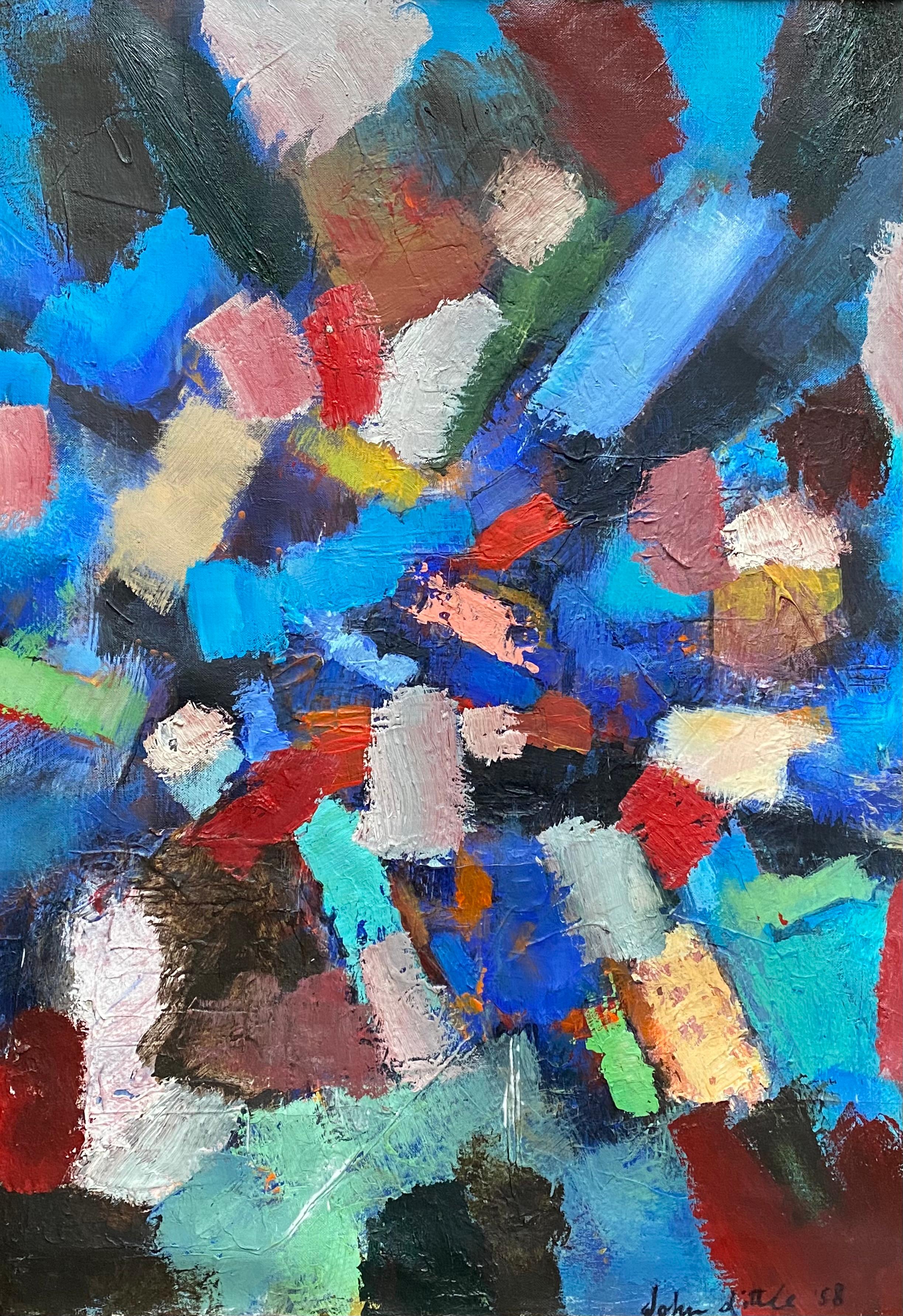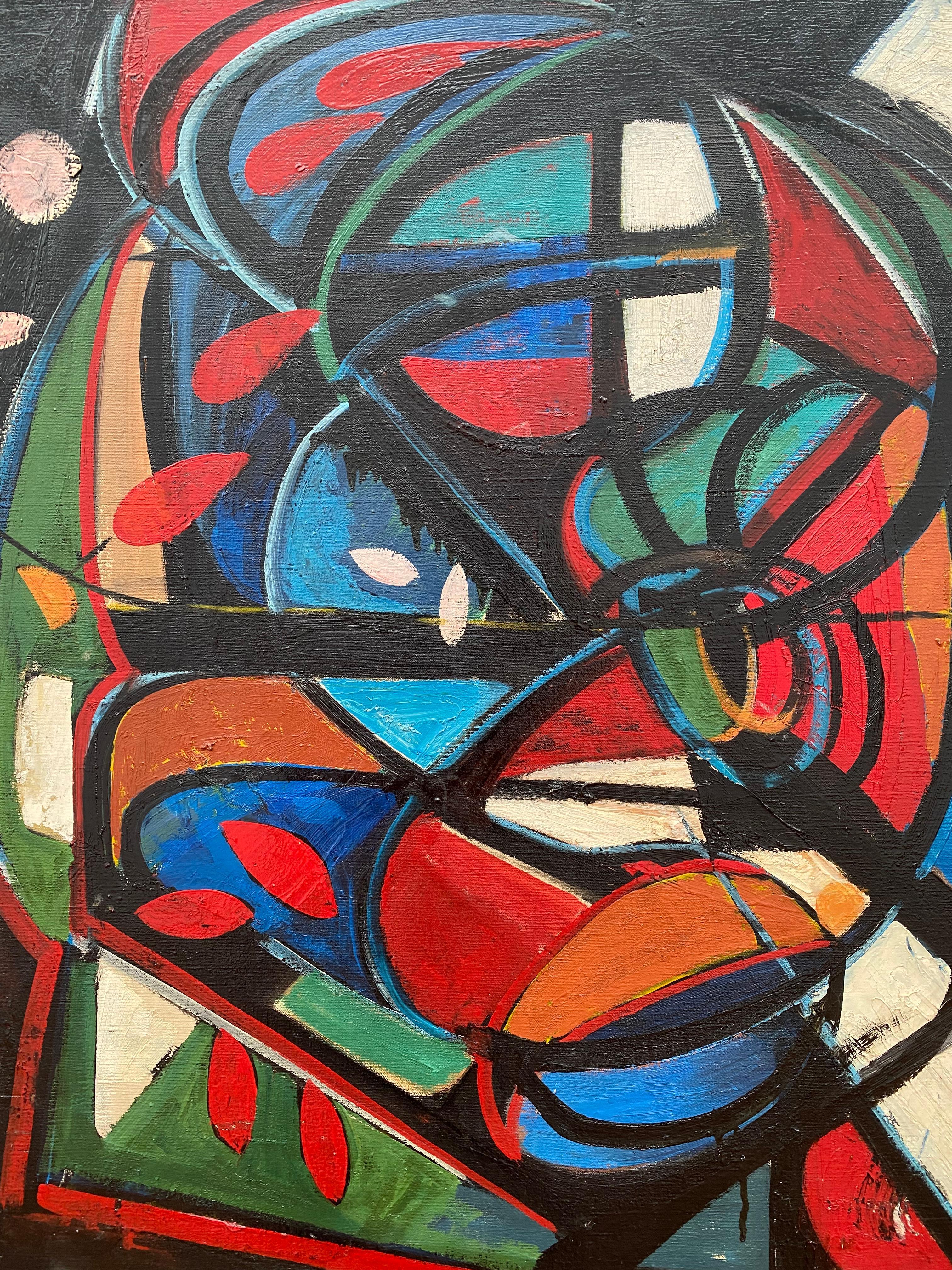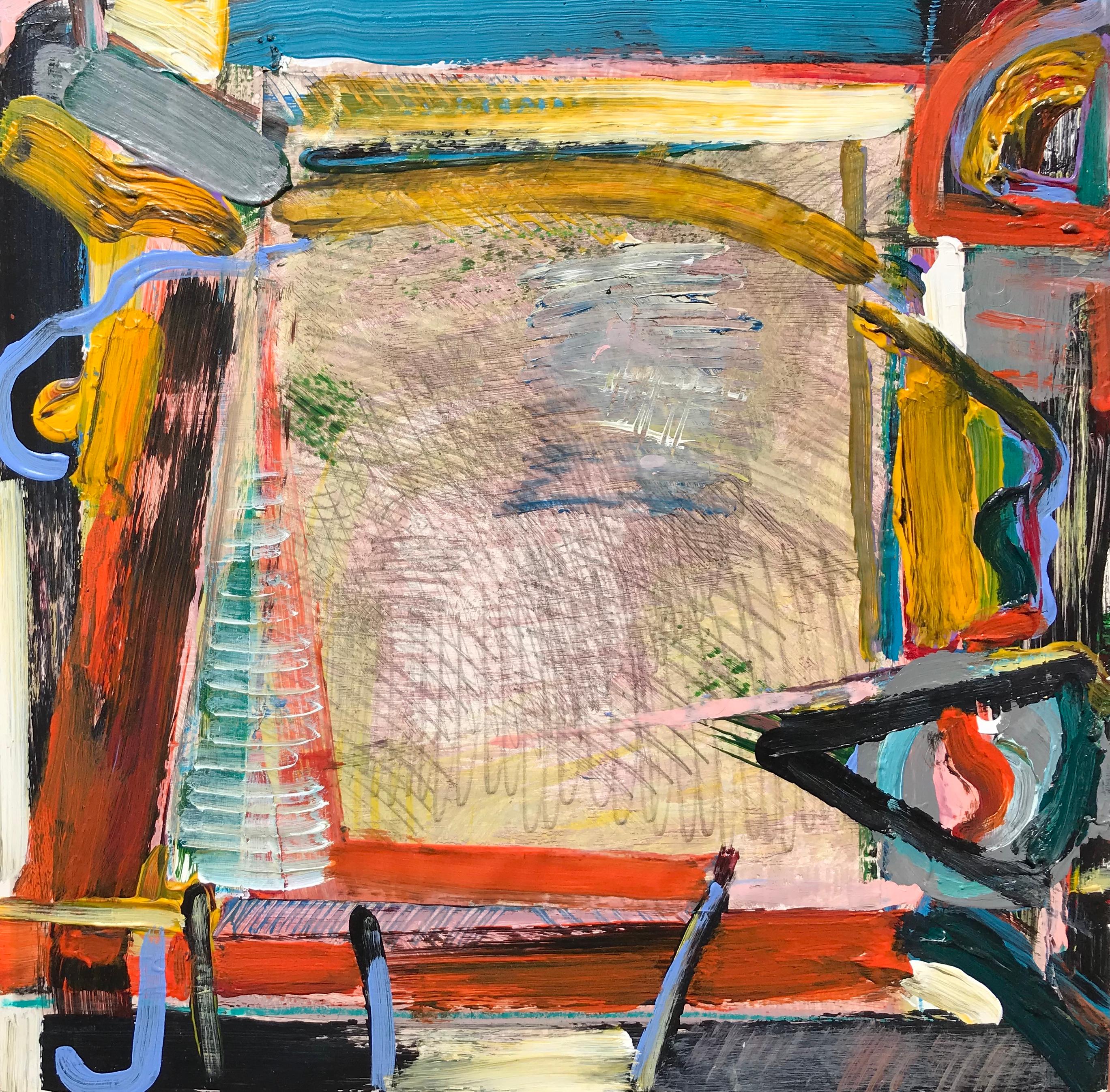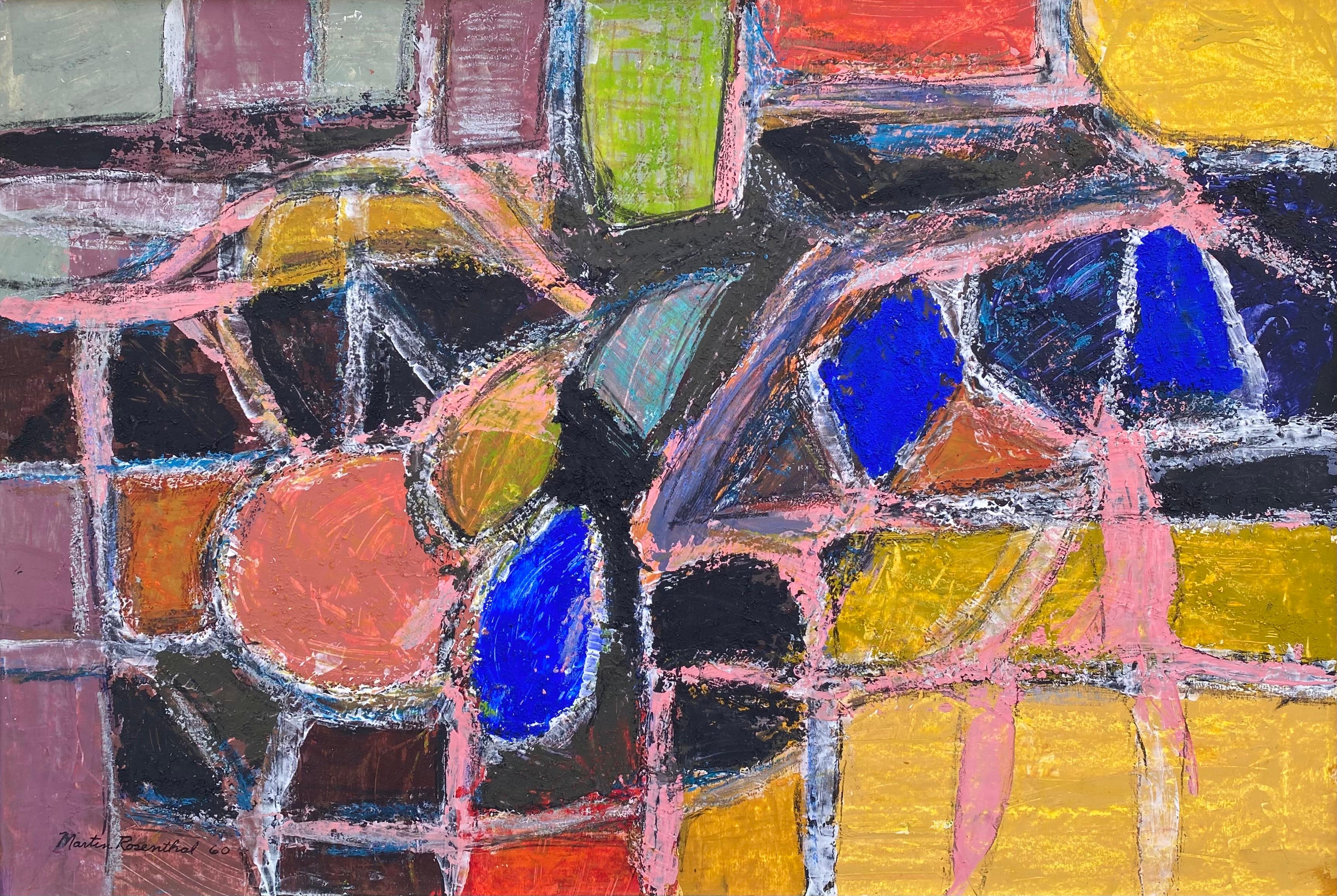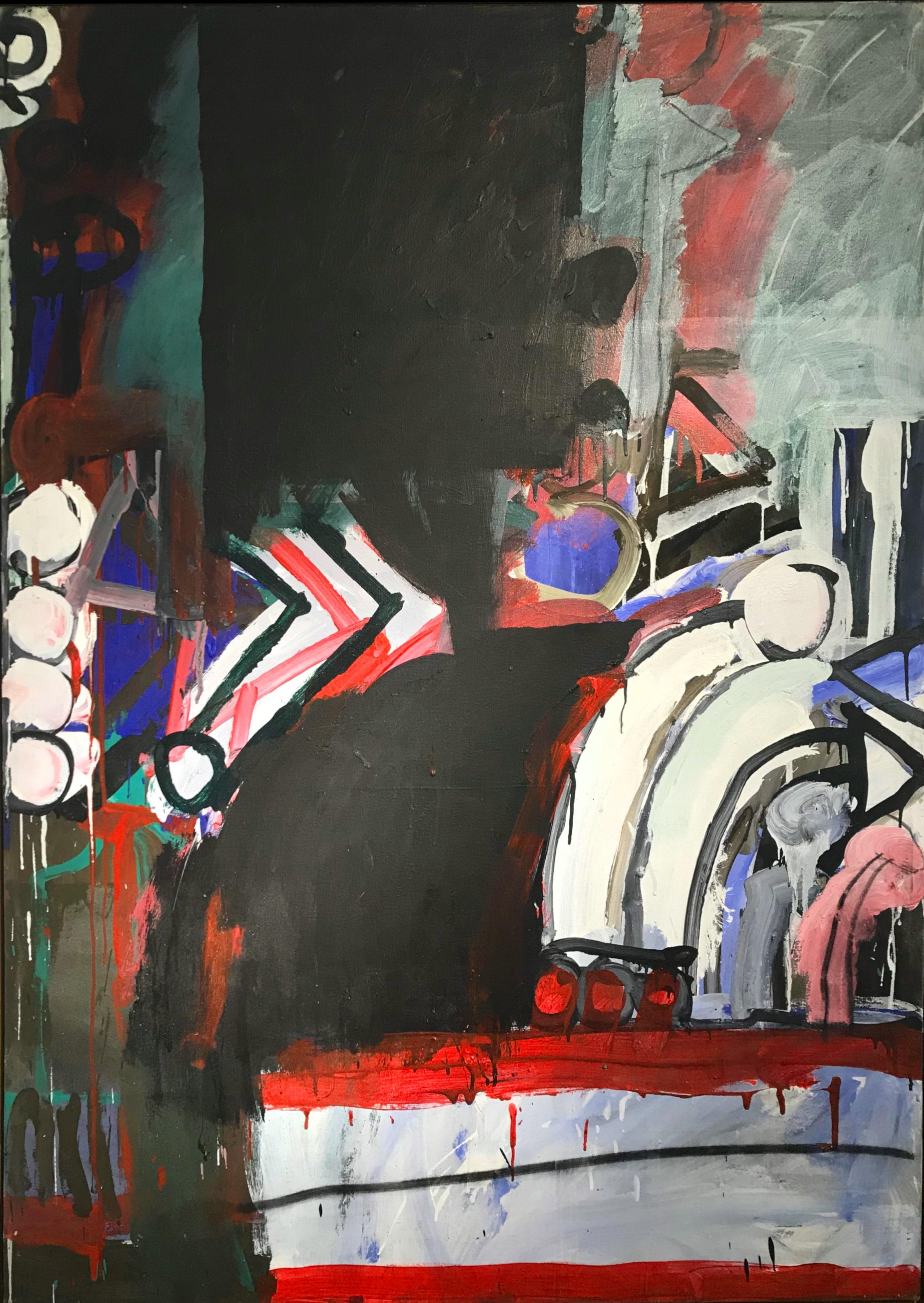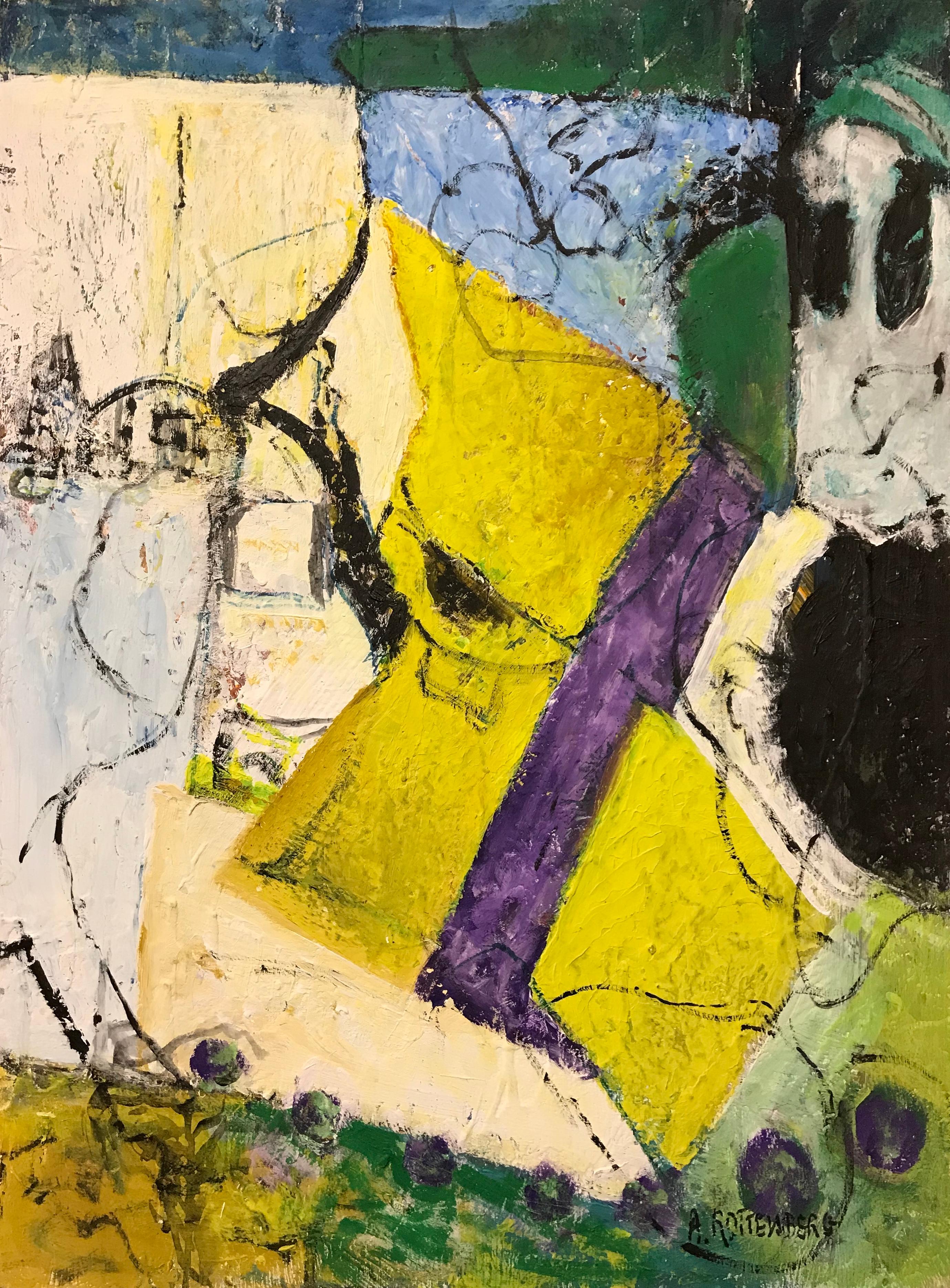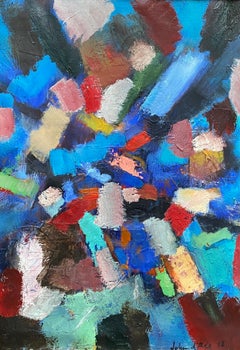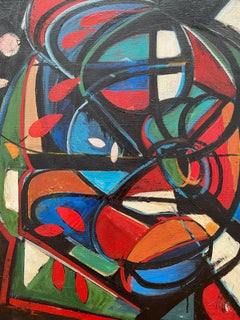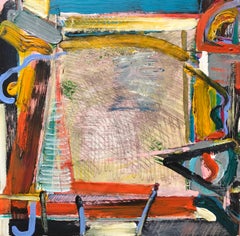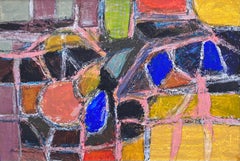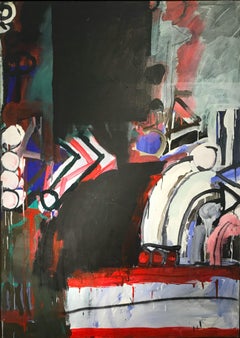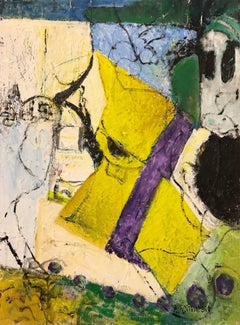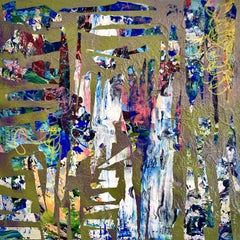Want more images or videos?
Request additional images or videos from the seller
1 of 12
Walter Blumel“Untitled Abstract”Circa 1965
Circa 1965
$2,800
£2,135.65
€2,431.98
CA$3,934.85
A$4,291.51
CHF 2,273.35
MX$51,449.13
NOK 28,952.41
SEK 26,474.83
DKK 18,169.30
About the Item
Original oil on canvas abstract painting by the Czech/German artist, Walter Blumel. Signed upper right by the artist and verso as well. Condition is very good. Circa 1965. Overall framed measurements are 16.5 by 32.5 inches. Provenance: A Nokomis, Florida estate.
Walter Blumel (Czech/German 1921-1997)
Walter Blümel completed an apprenticeship as a painter in 1938 and studied at the Academy of Fine Arts in Vienna during World War II. After moving into his first studio in Leonberg in 1946, he began studying as a master student under the renowned artist Willi Baumeister in 1948.
Artistically, Blümel was particularly interested in the tension between humanity and technology, seeking to express this through abstract paintings reminiscent of technical drawings, sculptures, and poems.
- Creator:Walter Blumel (1921 - 1997, Czech, German)
- Creation Year:Circa 1965
- Dimensions:Height: 15.25 in (38.74 cm)Width: 31.25 in (79.38 cm)Depth: 1.5 in (3.81 cm)
- Medium:
- Movement & Style:
- Period:
- Condition:
- Gallery Location:Southampton, NY
- Reference Number:1stDibs: LU14116379272
About the Seller
5.0
Platinum Seller
Premium sellers with a 4.7+ rating and 24-hour response times
Established in 1977
1stDibs seller since 2013
558 sales on 1stDibs
Typical response time: <1 hour
- ShippingRetrieving quote...Shipping from: Sarasota, FL
- Return Policy
More From This Seller
View All“Untitled”
By John Little
Located in Southampton, NY
Early, original oil on canvas painting by the well known American abstract expressionist artist, John Little. Signed and dated lower right, 1958.
Signed and dated verso. Rose Fried...
Category
1950s Abstract Expressionist Abstract Paintings
Materials
Canvas, Oil
$14,000
“Untitled Abstract”
By Nahum Tschacbasov
Located in Southampton, NY
Original mid-century modern abstract oil on canvas painting by the well known Russian/American artist Nahum Tschacbasov. Signed lower right and dated 1945. Condition is very good. P...
Category
1940s Abstract Expressionist Abstract Paintings
Materials
Canvas, Oil
“Untitled”
By Iliyan Ivanov
Located in Southampton, NY
Original acrylic on fiberboard painting by the Bulgarian/American artist, Iliyan Ivanov. Signed, and dated verso, 2012. Untitled. This painting is part of the “Memories of Unfinis...
Category
2010s Abstract Expressionist Abstract Paintings
Materials
Acrylic, Fiberboard
$1,480 Sale Price
20% Off
“Untitled Abstract”
By Martin Rosenthal
Located in Southampton, NY
Original abstract oil painting on heavy card stock by the American artist Martin Rosenthal. Signed lower left and dated 1960. Condition is very good. Slight bow to board. Nicely pro...
Category
1960s Abstract Expressionist Abstract Paintings
Materials
Oil, Board
$2,080 Sale Price
20% Off
“Untitled”
By John Little
Located in Southampton, NY
Original oil on canvas painting by the well known abstract expressionist artist, John Little. Signed lower right. Signed and dated 1965 on top stretcher bar verso. Betty Parsons Ga...
Category
1960s Abstract Expressionist Abstract Paintings
Materials
Canvas, Oil
$9,600 Sale Price
20% Off
“Untitled”
By Iliyan Ivanov
Located in Southampton, NY
Original acrylic on fiberboard painting by the Bulgarian/American artist, Iliyan Ivanov. Signed, and dated verso, 2012. Untitled. This painting is part of the “Memories of Unfinis...
Category
2010s Abstract Expressionist Abstract Paintings
Materials
Acrylic, Fiberboard
$1,480 Sale Price
20% Off
You May Also Like
Untitled
Located in New York, NY
This work conveys a sense of mystery and excitement carefully contained. Deep black in the middle draws the viewer in, provoking one to slowly expand their view out to the edges of t...
Category
Late 20th Century Abstract Expressionist Abstract Paintings
Materials
Canvas, Acrylic
Original Oil Painting
By Armand Rottenberg
Located in Cirencester, Gloucestershire
Expressionist Abstract
by Armand Rottenberg (French 1903-2000)
Signed oil painting on board, unframed
Board size: 29 x 21 inches
provenane: the artists estate, France
Stunning origi...
Category
Mid-20th Century Abstract Expressionist Abstract Paintings
Materials
Oil
Not All That Dark, Abstract Painting
Located in San Francisco, CA
Artist Comments
Vibrant colors spread across one half of this abstract composition, while a thin layer of black dominates the other. Depending on the viewer's perspective, the ...
Category
21st Century and Contemporary Abstract Abstract Paintings
Materials
Acrylic
Right, Painting, Acrylic on Canvas
By Robert Musser
Located in Yardley, PA
This piece has "Richter" style smears in bright paint with a muted shrapnel grid overlaying the saturated field. It's one of my favorite smaller paintings I have done. The feel is ve...
Category
2010s Abstract Abstract Paintings
Materials
Acrylic
Untitled, by Eddie Martinez
By Eddie Martinez
Located in Dubai, Dubai
By Eddie Martinez
Untitled, 2015
Crayon, coloured pencil, sharpie and enamel
15 x 21 cm
Category
2010s Contemporary Abstract Paintings
Materials
Enamel
Untitled - Framed Abstract Oil Painting, Gestural Abstraction, Contemporary Art
By Dick Wray
Located in Houston, TX
This abstract oil painting by late Houston artist Dick Wray expresses a striking kinetic energy. Thick layers of paint foster a remarkable tactility commonly found in Dick Wray’s art...
Category
Early 2000s Abstract Expressionist Abstract Paintings
Materials
Canvas, Oil, Laid Paper
